The Old Town of Lijiang Posted by sasha on Aug 30, 2015 in Uncategorized
One of the most popular places to visit in Yunnan province (and China in general) is the old town of Lijiang (丽江 – lì jiāng). Famed for its snowy mountain peaks, vibrant ethnic minority culture, and relaxed pace of life, this Song Dynasty-era town attracts throngs of tourists, both domestic and international. The town was even granted UNESCO World Heritage status in 1997 as “an exceptional ancient town set in a dramatic landscape which represents the harmonious fusion of different cultural traditions to produce an urban landscape of outstanding quality.” Although the crowds here can be a bit intense – especially during major Chinese holidays such as the Spring Festival and National Day – visiting at off-peak times isn’t so bad, and the natural beauty surrounding the town makes it a very worthwhile destination.
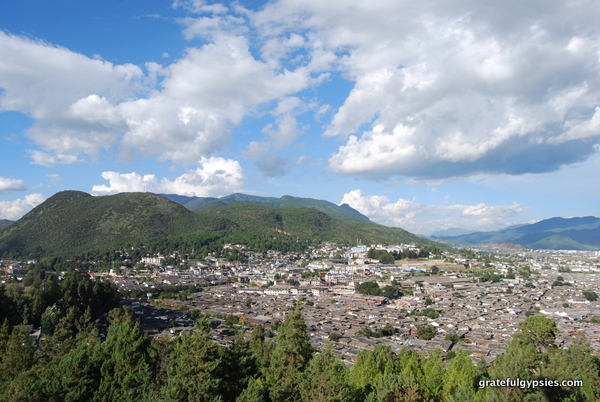
The Old Town as seen from above.
For those interested in traveling to Lijiang, here’s a brief guide to this famous town:
The Old Town
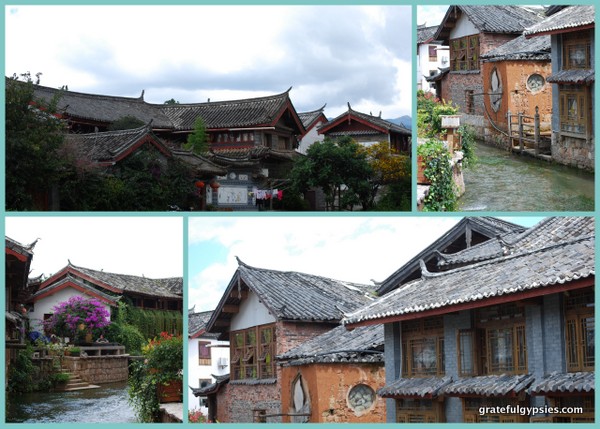
Some scenes of the old town.
The old town was once an important stop along the ancient Tea Horse Road (茶马古道 – chá mǎ gǔ dào), and today it serves as the center of tourism. A maze of cobblestone streets, bridges, and waterways, it’s a great place to get lost and just wander around. Most of the buildings have been converted into hotels, restaurants, and shops, but at least the outward appearance still evokes a sense of an ancient Chinese town.
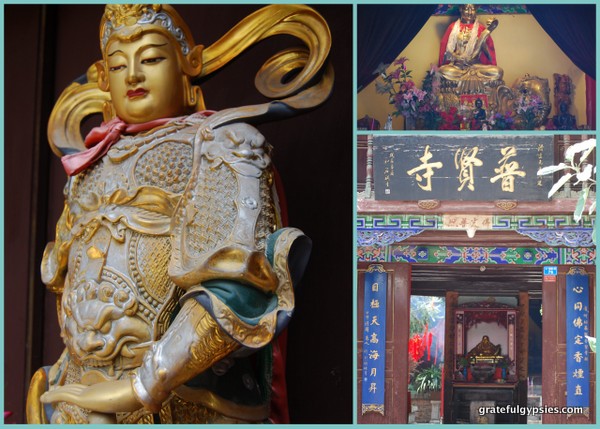
Local temple in Lijiang.
It’s not all knick-knack shops and guesthouses here, though – you can also stumble into a quaint little Buddhist temple or enjoy hanging out in the wide open square in the middle of town.
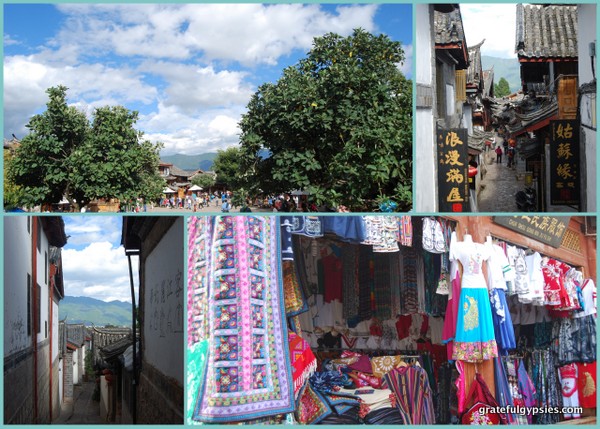
More of the old town.
A major highlight of the old town is the fact that it’s pedestrian only, making for a nice break from the big cities of China which are full of traffic jams and honking horns. That being said, the endless repetition of bongo drum shops, ethnic minority clothing, and yak meat jerky detract a bit from the character of the town. That plus the never-ending crowds of matching-hat wearing Chinese tourists will ensure that you want to escape the old town before too long to explore the surrounding area.
Black Dragon Pool (黑龙潭 – hēi lóng tán)
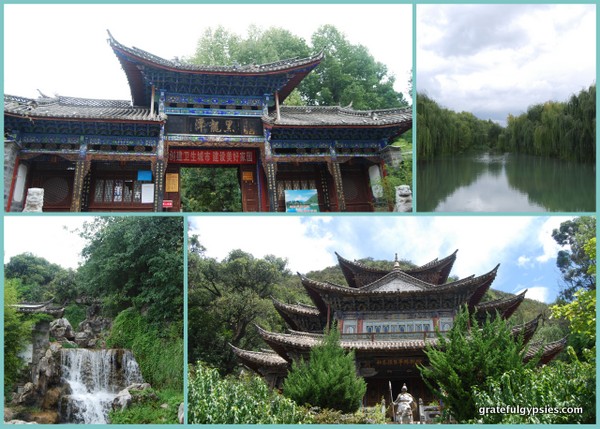
The Black Dragon Pool
Located just about 1 km away from the center of town, this park is popular with locals and tourists alike. On a clear day, you can get a postcard-worthy view of the Jade Dragon Snow Mountain (玉龙雪山 – yù lóng xuě shān) towering in the distance.
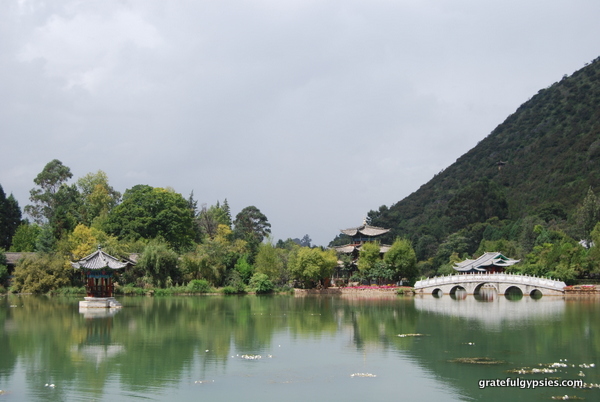
The mountain is behind those pesky clouds.
It’s also a great place for people watching, as locals love coming here to relax, play cards, or even engage in some group dancing.
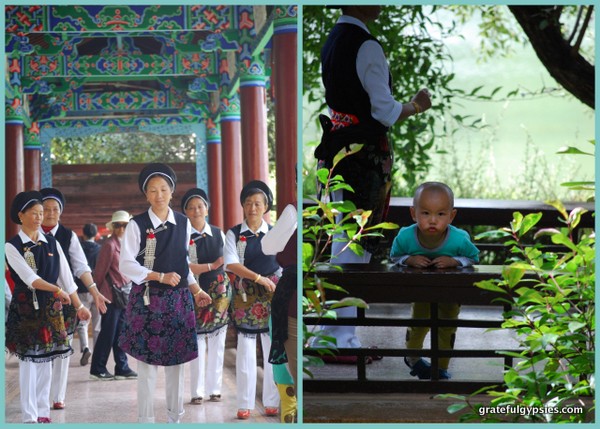
Bust a move.
While there’s technically an entrance fee required to visit the park, it’s not that hard to avoid it by walking around the park’s side rather than using the front gate. Seeing as how they already charge you 80 RMB just to be in the old town, we didn’t feel so bad skirting an extra fee just to visit the park.
Wan Gu Lou Tower (万古楼 – wàn gǔ lóu)
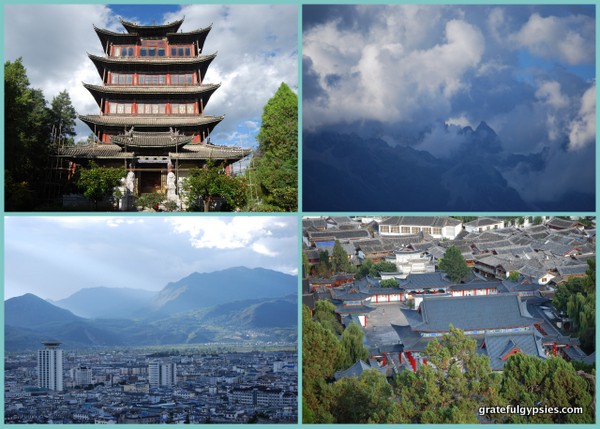
Take in the views from above.
For a bird’s eye view of the town, head to the top of the Wan Gu Lou tower. Free from the loud music and pushy crowds, the old town looks a lot better from above. From this vantage point, it’s almost possible to imagine what the town was like hundreds of years ago, long before selfie sticks reigned supreme. It’s an interesting contrast seeing the old town off to one side and the new city to the other – a clear example of China’s past and present standing side by side.
Shuhe Ancient Town (束河古镇 – shù hé gǔ zhèn)
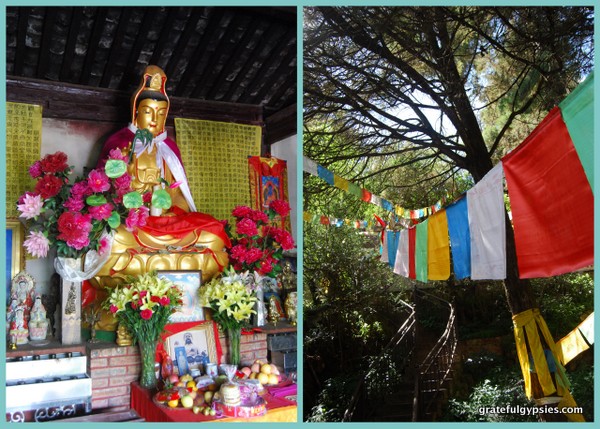
A Buddhist temple in Shuhe.
If the crowds in Lijiang become a bit too much for you, jump on a bike and cycle up to another ancient town – Shuhe. Although it’s starting to look more and more like Lijiang, the crowds are much smaller here and it’s just as scenic.
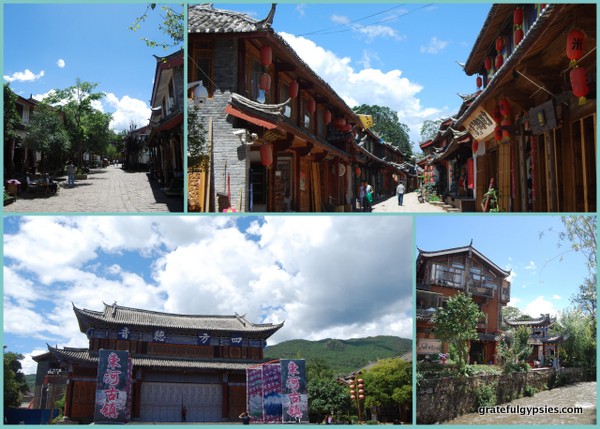
Scenes from Shuhe.
Those seeking a quieter, more peaceful vacation may even want to consider just staying out here instead of in Lijiang. There are plenty of guest houses to accommodate the small crowds, and you’ll definitely have a more relaxing trip by staying here instead.
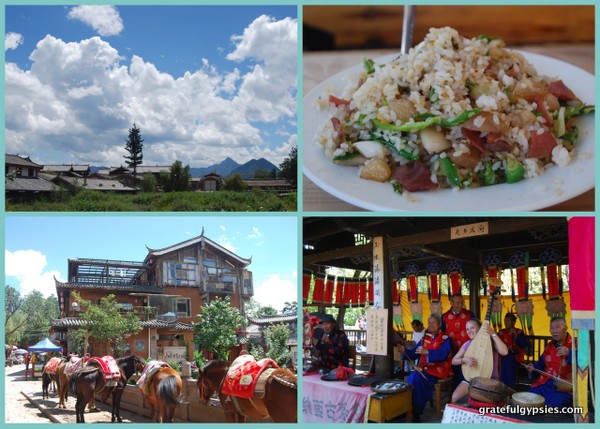
Chill out in Shuhe.
Naxi Culture (纳西文化 – nà xī wén huà)
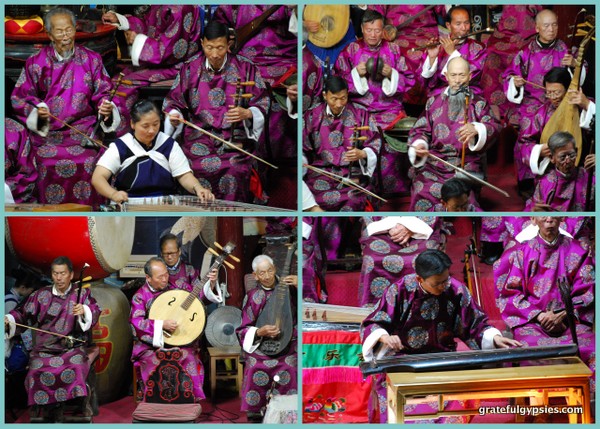
Naxi orchestra jammin’ out.
One of China’s 55 ethnic minority groups, the Naxi people live primarily in the Lijiang area. Traveling here is a great way to experience their culture, especially by taking in the nightly performance of the orchestra. Composed mostly of men aged 70-90, they play traditional songs on traditional instruments, making for a fantastic evening of music.
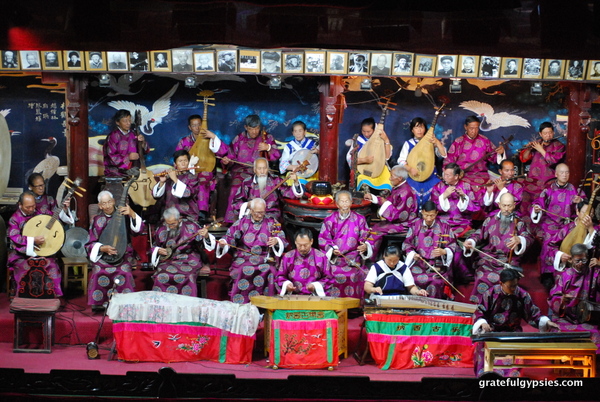
Naxi orchestra
Accommodation
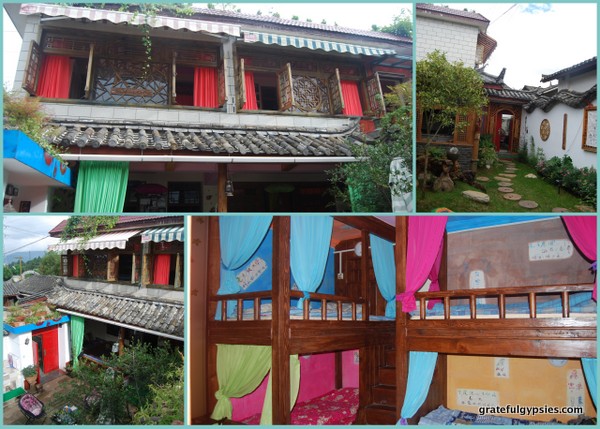
October Inn
There’s no shortage of places to stay in and around Lijiang, ranging from budget dorm rooms to 5-star hotels. Keep in mind that staying within the old town generally means higher prices and bigger crowds. We opted to stay in the relatively new October Inn, located just a short walk outside of the town in a village. The owner is super friendly, the views from the roof are incredible, and they have what just may be the best bunk beds ever. For those seeking a bit more privacy, there are also a few private rooms which are all very well decorated.
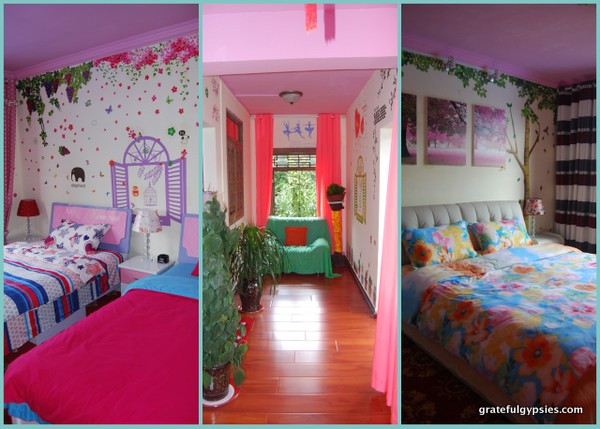
Private rooms in October Inn.
Food & Drink
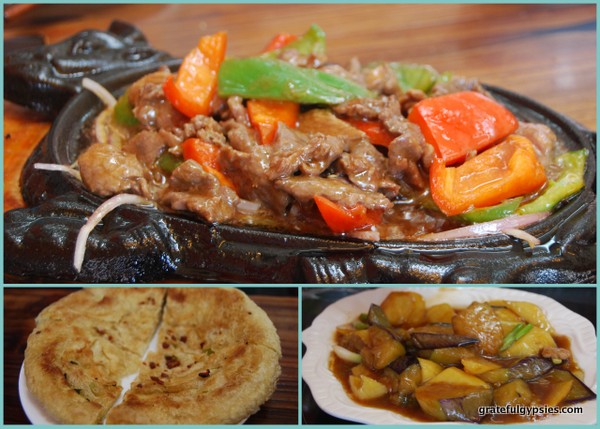
A tasty Lijiang meal.
There are also tons of restaurants scattered around the old town, offering up just about any type of Chinese cuisine imaginable. For a local flavor, you’ve got to try the Lijiang baba (丽江粑粑 – lì jiāng bā bā), a kind of flatbread that goes great for dipping in saucy dishes. Goat meat is also popular here, so don’t be surprised to see a restaurant employee carving one up right outside of the establishment.
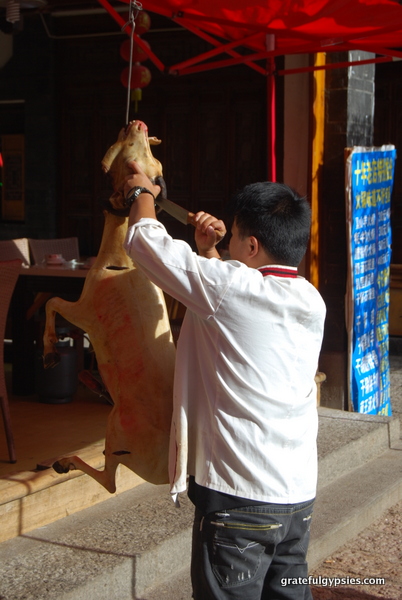
Goat meat, anyone?
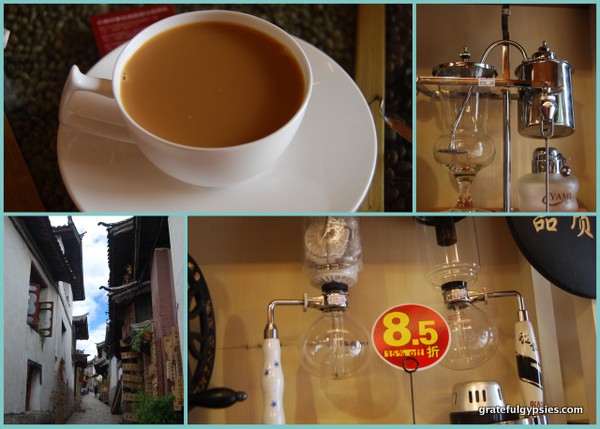
A local coffee shop.
For drinks, there are plenty of teahouses, coffee shops, and bars to choose from. The scene gets a little wild at night, with bars vying for tourists’ RMB by blasting offensively loud music and shining way too many neon lights.
Chinglish
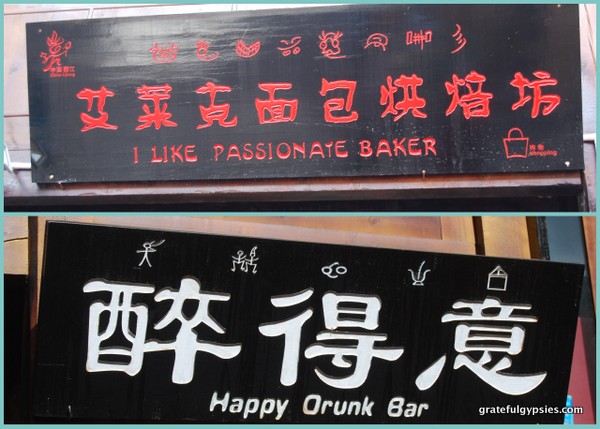
Who wouldn’t want to go to the Happy Drunk Bar?
If you’ve been following the blog for a while, you’re familiar with my love for Chinglish. Having seen quite a few hilarious Chinglish signs around Lijiang, I just had to share them with you…
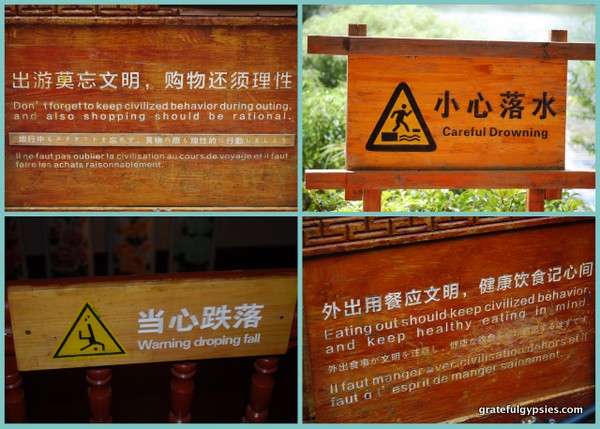
I <3 Chinglish.
Although many decry Lijiang as being too touristy, it’s still a beautiful town with a long history and an interesting culture. As long as you don’t visit on a major holiday and don’t spend all of your time within the old town, you’ll have an enjoyable trip. Plus, as a major transportation hub, Lijiang is a great jumping off point for other adventures in Yunnan province, such as the epic Tiger Leaping Gorge hike. Spend a few days here before heading out to more off-the-beaten path places and enjoy all that this historical town as to offer.

Build vocabulary, practice pronunciation, and more with Transparent Language Online. Available anytime, anywhere, on any device.
About the Author: sasha
Sasha is an English teacher, writer, photographer, and videographer from the great state of Michigan. Upon graduating from Michigan State University, he moved to China and spent 5+ years living, working, studying, and traveling there. He also studied Indonesian Language & Culture in Bali for a year. He and his wife run the travel blog Grateful Gypsies, and they're currently trying the digital nomad lifestyle across Latin America.




Leave a comment: